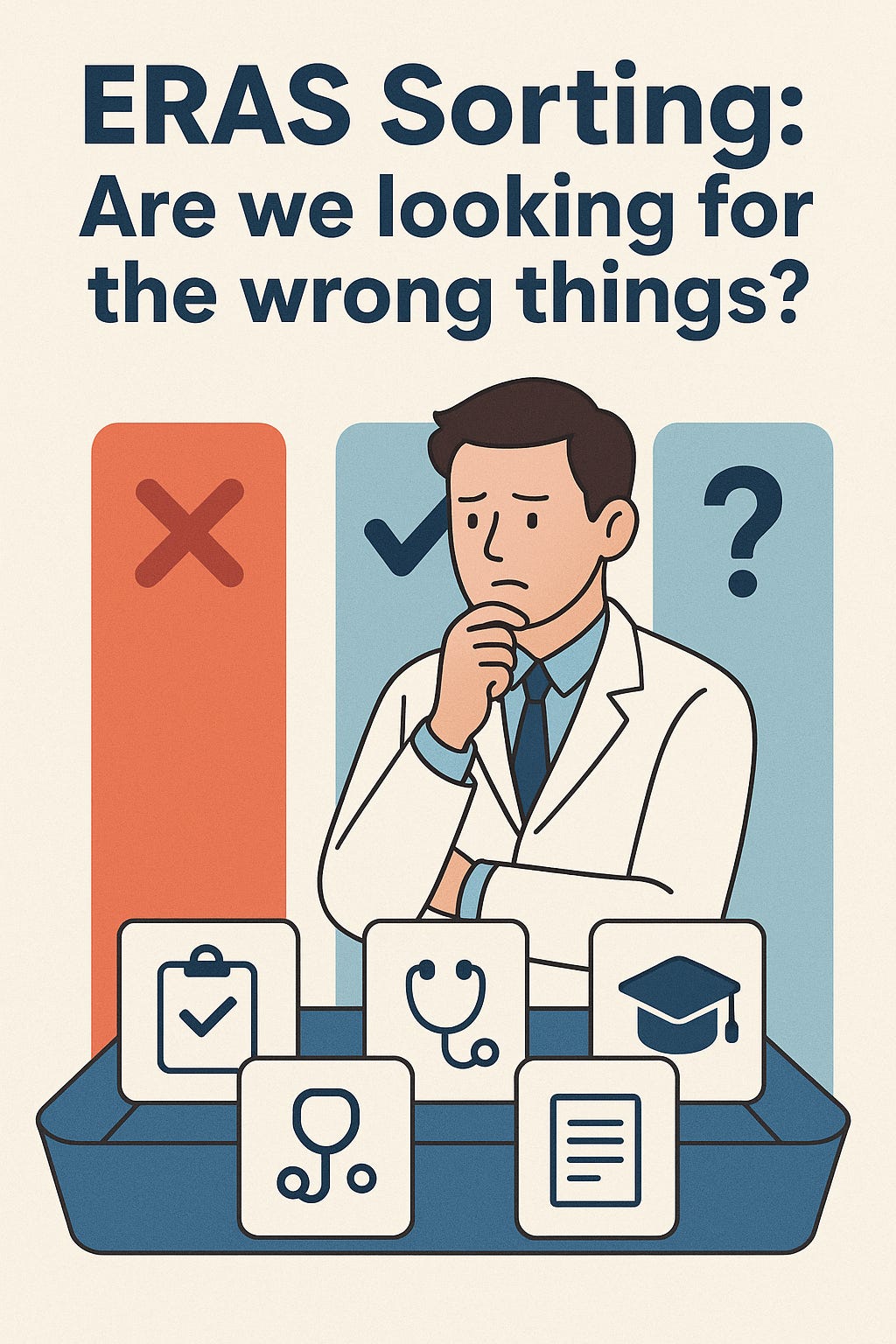ERAS Sorting: Are We Looking for the Wrong Things?
Every fall, program directors, faculty, and coordinators face the enormous task of reviewing thousands of ERAS applications. In an environment where volume often outpaces capacity, programs rely on shortcuts- filters, test scores, institutional prestige, and sometimes gut instinct to make decisions that shape the trajectory of a physician’s career.
But here’s the real question: are we prioritizing the right metrics or just the easiest one to sort?
The Problem with “Quick Filters”
When applications number in the thousands, many programs lean heavily on cutoffs: USMLE scores, clerkship grades, class rank. While these can help manage workload, they risk overlooking qualities that truly matter for long-term-success- resilience, teamwork, adaptability, and communication.
By privileging numerical or superficial markers, we may unintentionally create a cycle where programs miss candidates who might have been the best cultural fit, the most committed to the speciality, or the most prepared to thrive in residency.
Green Flags, Red Flags, and the Gray Space in Between
Programs often speak of “green flags” (honors, AOA, stellar letters) and “red flags” (exam failures, gaps, disciplinary actions). But the reality is more nuanced. A “red flag” could signal growth, perseverance, or even lived experience that enriches a team. Conversely, a “green flag” on paper doesn’t always translate to professionalism, compassion or teachability in practice.
What if instead of rigid categories, programs embraced contextual review? Looking at the whole trajectory of the applicant, not just the highlights or lowlights would paint a more accurate picture of potential.
A Call for Rethinking Application Review
This is where innovation has a role.
Companies like Thalamus and others are designing platforms that can help programs triage applications more holistically, using structured tools that reduce unconscious bias and bring competencies into focus. But even with new tools, the deeper work lies in reimagining what we value.
Do we want residents who score the highest on exams, or residents who will show up for their team and patients, communicate effectively, and continue to grow? Ideally, both, but if we choose what to prioritize, the answer should be clear.
Residency programs are just not filling spots; they’re shaping the next generation of physicians. That responsibility requires us to pause and ask: Are we looking for the right things, or just the easiest ones?


